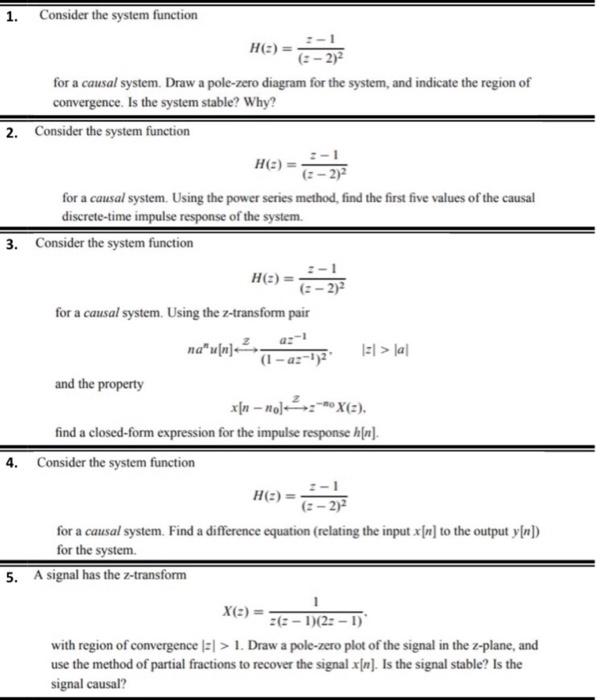Answered step by step
Verified Expert Solution
Question
1 Approved Answer
= 1. Consider the system function :-1 H(E)= (: - 2)2 for a causal system. Draw a pole-zero diagram for the system, and indicate the

Step by Step Solution
There are 3 Steps involved in it
Step: 1

Get Instant Access to Expert-Tailored Solutions
See step-by-step solutions with expert insights and AI powered tools for academic success
Step: 2

Step: 3

Ace Your Homework with AI
Get the answers you need in no time with our AI-driven, step-by-step assistance
Get Started


